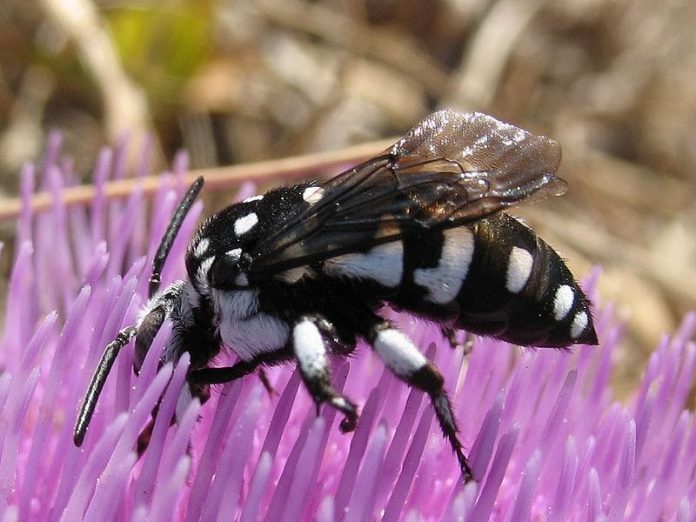We’ve outsourced all of our essential life functions to some not-necessarily-willing-but-ultimately- cooperating host bee species. It’s just the sort of thing that makes cuckoo bee life highly sought after and rather liberating. That vacation you’ve been planning in the hyacinth garden? Don’t worry, honey, there’ll be plenty of vacation time in your future. Just follow these simple guidelines.
1. Drop by at the right time of year. We recommend you plan the infiltration of your hosts for late Spring, to give those sucker species a chance to produce their first batch of host workers. As a parasitic bee, it’s in your best interest to be a little bit late to the party. Otherwise, awkward.
2. Choose your host family wisely. If evolution has taught us anything (it hasn’t — that’s why we’re abandoning our children in stranger’s nests) it’s that you should probably stick to what works. Thankfully we have a concise list of host families that will work for your particular species — consult this guide to find a host for you.
You can use that wonderfully evolved olfactory system of yours to sniff out the right colony. Careful though — large host colonies will very likely kill you, and small colonies won’t have enough workers to feed you. Think like Goldilocks — you’ll need just the right place to colonize.
3. Drop your kids off discreetly. You’ll need to dress similar to those unsuspecting parents and be sure to wear the right scent so that you’re not killed on arrival. You can mask yourself by hanging out under the brood, allowing you to acquire its odor, or with some chemical camouflage. Thankfully, discretion is in your namesake — the origin of the Greek Psithyros is “whispering.” Just a fun fact for you! Scientist Humans thought this was cute given that we’re rather slow compared to nonparasitic bees.
Another option is to go in swinging, but this is risky, and some hosts really won’t like it. For example, if Bombus fervidus catches you, the queen will eat a bunch of honey and regurgitate it in your face. You will get stuck in the vomit and die.
4. Show your kids (and their new hostage caretakers) who’s boss. You have a couple of options when you invade your host colony: you could live in peaceful coexistence with your co-queen, or usurp the crown. Personally, I prefer the latter. As a parasitic bee mom, you’ve got a thicker exoskeleton, stronger mandibles, and a bigger venom sac. These will also come in handy if/when those worker bees realize you’re not their real Mom.
To make sure there are enough resources for you and yours, it’s a good idea to destroy any egg sacks that are lying around. Just as the other queen would have done, you should also act like a boss and inhibit any sort of sexual development in your workers — wouldn’t want them getting any ideas. We’re big fans of the “head rubbing” method, done by simply rubbing your head against the body of a recalcitrant worker bee. Unbeknownst to them, you’ll leave a chemical cocktail that inhibits any further aggression and keeps them in line.
5. Watch your back — given enough time, some of those generous bee species may become parasitic themselves. Social parasitism has appeared at least 24 times during bee evolution, meaning this could basically happen at any point for any other bee species.
6. Live fast, go extinct young. Given that you’re pretty helpless on your own and that many of your host bumble bee species are declining rapidly due to climate change, habitat reduction, and the like, we recommend living by the YOLO (you only live once) mentality. Three species in the Psithyrus group are critically endangered and it seems unlikely that humans will help any time soon.
There you have it, my little cuckoo bee. Go forth and steal things that don’t belong to you.







